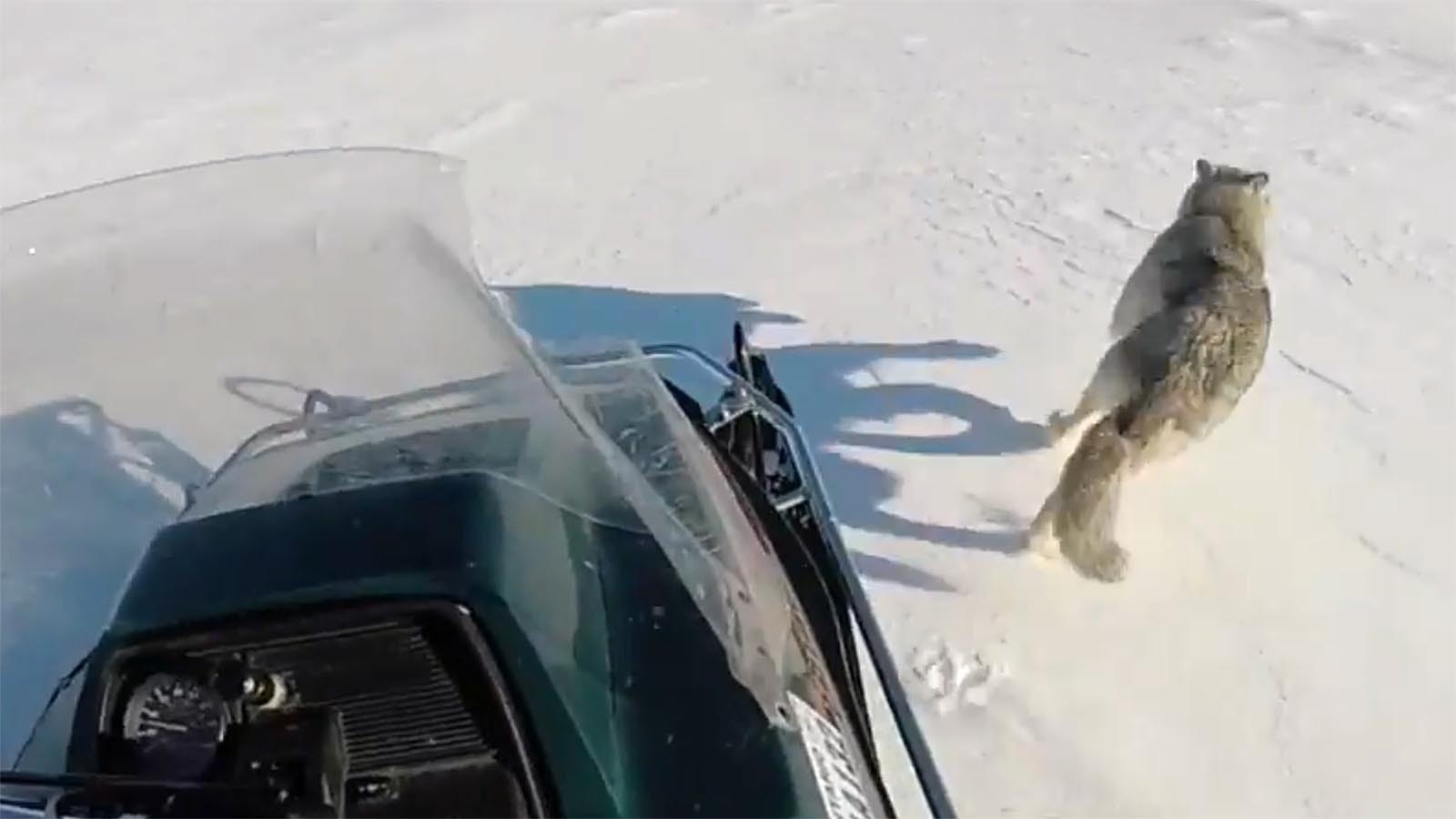Trappers should be required to check their lines every 24 hours to prevent the accidental deaths of mountain lions and pets, a trapping reform group claims.
But some Wyoming trappers said they’re already doing that.
Unchecked traps account for numerous deaths of mountain lions, dogs and other “non-target” animals, Lisa Robertson, spokeswoman for Wyoming Untrapped, told Cowboy State Daily.
In one instance that the group holds up an example, a young mountain lion died slowly in the freezing Little Laramie River in December 2023 after it got caught in a trapper’s snare.
That’s why there should be regulations across Wyoming and other Western states requiring trappers to check their lines at least once every 24 hours, Robertson said.
We’re Doing It Anyway
But most trappers do that anyway, seasoned trapper Scott Weber of Cody told Cowboy State Daily.
There’s no reason to create a new regulation to enforce what’s already standard procedure, he said.
“I run my traps every day. Every trapper I know runs their traps every day, for 100 reasons,” Weber said.
Leaving traps unattended for too long not only increases the risk of catching animals that the trappers didn’t intend to, it also exposes trappers to the risk of their equipment being vandalized or stolen, or furbearing animals ruining their pelts through prolonged struggling, he said.
Even other wildlife can ruin a trapper’s catch if it’s left unchecked for too long, he said.
“Eagles and hawks and swoop down” and eat a catch, he said.
Retired federal trapper Carter Niemeyer of Idaho told Cowboy State Daily that checking traps at least every 24 hours is good ethics.
Most animals can survive being caught for a short period without suffering debilitating injuries, he said.
So a trapper can free a dog or another relatively small animal that was unintentionally caught, and the critter should be fine in most cases, he said.
“Those animals, just being caught overnight, can be released with minimal injuries,” he said.
But what if a trapper walks up on an irritated mountain lion, or worse yet, a grizzly that’s been caught by accident?
That’s definitely not a do-it-yourself job, Niemeyer said.
“I would just get on the phone and call the game warden immediately,” he said.
Wildlife agents can tranquilize a bear or mountain lion so nobody risks getting torn to pieces trying to set it free, he said.
Mountain Lions Killed In 2022
Robertson said her group doesn’t want to ban trapping in Wyoming, and they appreciate ethical trappers.
However, there’s evidence the traps being left unattended to too long is killing too many animals, she said.
Wyoming Game and Fish reports obtained by Wyoming Untrapped indicate that in 2022, eight mountain lions died in the state after getting caught in snare traps.
Traps can also be a hazard for deer, moose and other wildlife, Robertson said.
“It’s just about every animal out there that at some point is going to encounter traps on public land,” she said.
Wyoming Untrapped supports a bill, expected to go before the Wyoming Legislature in 2025, establishing mandatory setback distances for traps near public trails and recreation areas.
That move was inspired by the death last year of an English bull terrier named Jester, who was caught in a beaver trap near Afton.
There currently aren’t any plans to introduce a bill making it mandatory to check traps every day, Robertson.
But she thinks that eventually, such regulations should be put in place across the West.
Loss Of Blood Flow
From a humane standpoint, it’s important to get to traps at least once every 24 hours, Niemeyer said.
In most instances, traps won’t crush animals’ bones and snares won’t strangle them, he said.
But restricting or cutting off the animal’s blood flow to paws or other extremities can inflict fatal damage on them, he said.
Paws can start to rot from a loss of blood or freeze solid, Niemeyer said.
And in the case of wildcats like mountain lions or lynx, that’s a death sentence.
“With cats especially, if you damage their front feet – that’s what they catch their prey with,” he said.
Neimeyer said he trapped wolves for decades in Montana and other states, mostly so federal wildlife agents could outfit them with radio collars.
In nearly all instances, if the wolf was freed from a trap within a few hours, it remained healthy, he said.
As to whether 24-hour checks should be mandated by law, Niemeyer said he can see the wisdom in it.
“I’m a firm believer that people do not police themselves worth a darn,” he said.
But on the other hand, it might be nearly impossible to enforce such a regulation, he added. Wildlife agents would have a difficult time establishing when traps were set.
Also, trapping frequently happens on private land, where game wardens might not have permission to go monitor traplines, Niemeyer added.
Legislature Has Better Things To Do
Weber said he doesn’t believe that groups such as Wyoming Untrapped aren’t out to try banning trapping altogether.
So, he doesn’t support the trapping reform bill that is going before the 2025 Legislature, or any others that might follow.
“It’s a slippery slope. Don’t give them an inch. They’ll take 10 miles, not 1 mile,” he said.
He added that the Legislature this year will be focused property tax reform and other such matters, so he doesn’t see trapping reform gaining much traction.
And Wyoming is also an agriculture-friendly state, where trapping is seen as a vital method of predator control, Weber added.
“In Wyoming, we trap to protect agriculture,” he said.
Mark Heinz can be reached at mark@cowboystatedaily.com.





